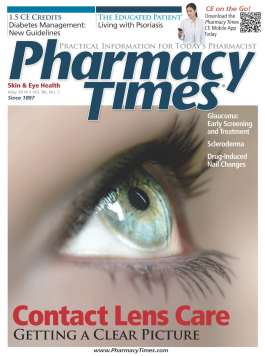Here Comes the Sun: A Brown Bag for Summer
Community pharmacists are in an ideal position to educate patients on how to protect themselves from the harmful effects of the sun.

In recent years, community pharmacists have been more successful in counseling patients on skin cancer prevention. Discussing the link between skin cancer and sun exposure is crucial. The community pharmacist is in a unique position to educate patients on how to protect themselves from the harmful effects of the sun. Although “sun worshipping” has lost some of its appeal as skin cancer rates and education have increased, people still enjoy spending time outdoors and having a little “fun in the sun.” Identifying patients at risk for sunburn is key. Proactively recommending appropriate sun protection products to patients is helpful year-round, especially during the summer. General sun safety and skin cancer awareness tips can be offered during any counseling session.
Brown Bag: Skin Cancer Prevention
JH is a 35-year-old fair-skinned blonde female who has been frequenting your pharmacy monthly. JH is at your counter to pick up a new prescription for azithromycin. You notice she has a small basket of items with her. The basket appears to be mostly filled with travel-sized items, sunscreen, and a few reading materials. You have always been under the impression that JH is very aware of her health and prescription medications.
While reviewing JH’s medication profile and preparing to counsel her on her new prescription for azithromycin, you have some concerns about JH’s skin. You ask JH if she is planning on being in the sun or if she is going on vacation. JH’s face lights up when you ask, and she tells you she is going to Hawaii. It has been a long, cold winter, spent mostly indoors. But with the ice melting outside, JH cannot wait to soak up the sun. As you listen, you notice what may be an inappropriate sun protection factor on the sunscreen JH is purchasing. Before JH leaves, you ask if she has a few minutes to briefly go over her medications. You explain the concept of a brown bag session, and JH hesitates. She thought services like brown bags were for elderly patients or those taking numerous medications. You smile and tell JH that brown bag sessions can be for any patient who is interested in talking to a pharmacist in detail about medications or preventive medicine. JH agrees to return to the pharmacy after she stops at home to pick up all of her medications.
In preparation for JH’s return, you print out her medication profile:
- Azithromycin pack; use as directed for 3 days
- Esomeprazole 40 mg once daily
- Lo Loestrin Fe once daily
- Sertraline 50 mg once daily
JH returns for her appointment. She removes her medications from her bag, and you notice these additional medications:
- OTC calcium carbonate 1000 mg once daily
- Adult multivitamin once daily
- OTC omeprazole 20 mg once daily, unopened
- OTC topical retinoid
- Used and unused Retin-A sample tubes; prescriber unknown
As you review the medications for accuracy, JH continues to tell you how excited she is about her upcoming vacation. After she finishes, you explain to her that you are somewhat concerned about the sun’s effect on her skin, given that she is freckled and fair skinned. You mention that some of her medications may make her more sensitive to the amount of sun exposure she will receive in Hawaii. You review some sun cancer prevention tips with JH. You remind her to limit midday sun exposure, that her sunscreen should protect her against ultraviolet A and B light, and that she should remember to reapply sunscreen every 2 to 3 hours, or after sweating or swimming. You also encourage JH to pack a hat and other protective clothing.
You ask JH if she has ever seen a dermatologist or personally checked any moles for signs of cancer. She shakes her head “no” and tells you that she only goes to see her “OB/GYN” and her family practitioner. You remind JH that analyzing moles or freckles for possible abnormalities is important and that she can always ask you for help in identifying something that may concern her.
JH is very grateful for the discussion. You explain to her that she does not need to stay out of the sun entirely but that she needs to take appropriate preventive measures to stay safe in the sun. What are some additional sun safety tips to share with JH? What other concerns do you have about JH’s medication profile?
Dr. Drury works as a clinical pharmacy specialist in Chicago, Illinois, and Milwaukee, Wisconsin. She earned her doctor of pharmacy from Midwestern University College of Pharmacy. Her blog, Compounding in the Kitchen, appears on www.PharmacyTimes.com.

